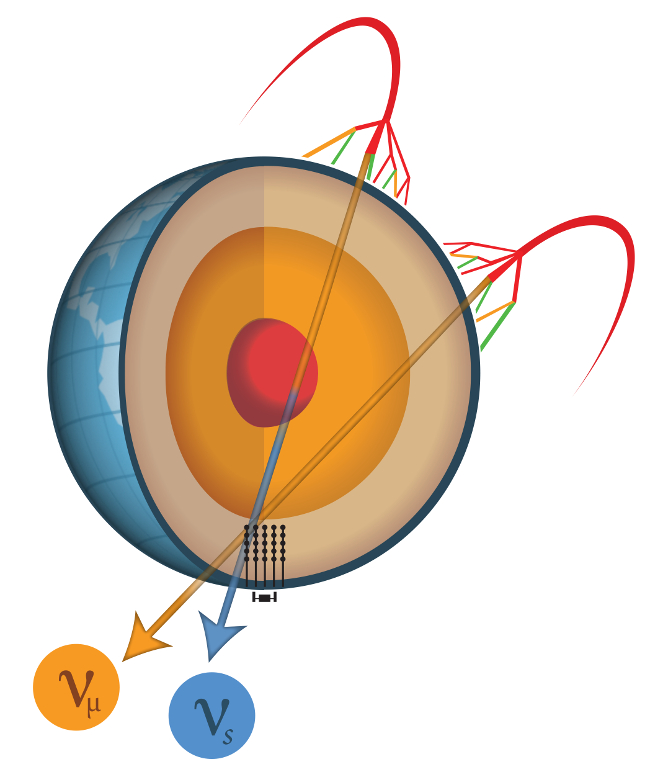
 Credit: IceCube Collaboration
Credit: IceCube Collaboration
The Sterile Cuckoo?
By far the vast majority of matter is in the form of so-called "Dark Matter". Dark in the sense that it generates no electromagnetic radiation, but also dark in the sense that we have little understanding of its nature. One of the earliest indications of Dark matter was due to the work of Fritz Zwicky, who in 1931 noted that the gravity produced by all the luminous matter in certain clusters of galaxies was much less than that needed to hold the cluster together. In the 1960's studies by Vera Rubin of how stars in the Milky Way rotate around the Galactic center provided even stronger evidence that the motions of stars were determined by the presence of some mysterious dark source of gravity. Observations with NASA's WMAP satellite finally determined that our Universe consists of about 24% dark matter and only about 5% "normal matter" (the remainder is "Dark Energy"). The fact most of the matter in our Universe is unseen is very unsettling, so identification of this "dark" component to matter is an active area of research. Many physicists believe that dark matter is in fact some new type of subatomic particle. One promising candidate is the so-called "sterile neutrino", a variant of the 3 known types of neutrinos that we know about. Neutrinos are weird particles, which move through space at the speed of light, but which rarely interact with ordinary matter. They can penetrate enormous distances through matter, and are enormously abundant - trillions of them, mostly produced by the nuclear reactions at the center of the Sun, pass through your body every second. There have been intriguing suggestions of the presence of "sterile neutrinos" in data from earth-bound nuclear reactors, and also in careful studies of X-ray emission from external galaxies, but nothing conclusive - until now. New analysis of neutrino data from the Ice Cube neutrino observatory has apparently laid to rest the existence of the sterile neutrino. Ice Cube consists of detectors buried about a mile deep in the clear ice of Antarctica. Ice Cube studies the enormous numbers of neutrinos which occasionally interact with an atomic nucleus in the ice, producing a weird blue light which can be seen by the Ice Cube detectors. This is shown schematically in the image above, in which cosmic neutrinos passing through the earth could be detected by the Ice Cube array shown as the black dots at the South Pole. If sterile neutrinos exist, they should have revealed themselves in the Ice Cube data, but after careful analysis the Ice Cube team concluded that the existence of sterile neutrinos could be ruled out to a very high confidence level. What other WIMP might hold the Universe together?
Published: August 29, 2016
<
HEA Dictionary ● Archive
● Search HEAPOW
● Other Languages
● HEAPOW on Facebook
● Download all Images
● Education ● HEAD
>

Each week the HEASARC
brings you new, exciting and beautiful images from X-ray and Gamma ray
astronomy. Check back each week and be sure to check out the HEAPOW archive!
Page Author: Dr. Michael F. Corcoran
Last modified Tuesday, 27-Feb-2024 10:13:30 EST


